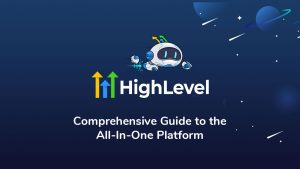In today’s fast-paced and competitive business landscape, understanding your target audience is more critical than ever. Audience profiling is a powerful tool that helps marketers create tailored messages, develop effective marketing strategies, and achieve better results.
Here at Meta Phoenix, we’ll discuss what audience profiling entails and why it’s essential for marketers to know and understand it. So, let’s embark on this journey of discovering the key to unlocking your marketing potential through the art and science of audience profiling.
What is an Audience Profile
An audience profile is a tool used to identify and analyze target markets. It involves segmenting groups of people into smaller, more specific audiences to better understand their needs and preferences. This allows marketers to create more effective campaigns to reach the right people with the right message.
When creating an audience profile, it’s essential to consider demographics, current behaviors, knowledge, values, aspirations, and more. For example, if you’re targeting a younger demographic, you should focus on digital channels like social media or streaming services. On the other hand, if you’re targeting an older demographic, traditional methods such as television or radio may be more effective.
It’s also important to remember that audience profiles can change as people’s needs and preferences evolve. Therefore, it’s important to regularly review your audience profiles to ensure that your campaigns still reach the right people with the right message.
How to Create an Audience Profile
Creating an audience profile is important to any successful marketing or advertising campaign. It helps you to identify and segment your target market into smaller, more manageable groups to reach them more effectively. Below are some steps to help you create a compelling audience profile.
Step 1: Identify Key Demographics
Begin by collecting demographic information about your target audience. This data will help you understand your potential customers and what factors might influence their purchasing decisions. You can collect demographic information through website analytics, social media analytics, Census data, and third-party research vendors.
Key demographic aspects to consider include:
- Age
- Gender
- Income
- Education level
- Location (urban, suburban, or rural)
- Occupation
- Marital status
- Family size
Step 2: Explore Psychographics
Next, you’ll have to delve into the psychographic characteristics of your target audience. Psychographics offer insight into your audience’s values, interests, and personality traits and help you create marketing messages and stories that resonate with them more deeply. Researching psychographics is a little more labor intensive, but you can find this information by researching your customer data, such as surveys, questionnaires, and tools like Google Trends.
Key aspects to consider when exploring psychographics include:
- Values (e.g., environmentalism, family, health)
- Interests (e.g., hobbies, favorite activities)
- Lifestyle preferences (e.g., urban dwellers, fitness enthusiasts)
- Personality traits (e.g., introverted, adventurous)
- Buying motivations (e.g., convenience, quality, price)
Step 3: Analyze Behavior
Understanding your audience’s behavior can provide valuable insights into how they interact with your product/service and make purchasing decisions. Analyzing behavior is another labor-intensive duty that marketers must take. However, this information must come from internally. Some of the most popular tools that are used to get this information are Google Analytics and Woopra.
Consider the following behavioral aspects:
- Purchasing habits (e.g., online vs. in-store, frequency)
- Preferred communication channels (e.g., email, social media, phone)
- Usage patterns (e.g., heavy users, occasional users)
- Brand loyalty (e.g., repeat customers, brand switchers)
Step 4: Create Marketing Strategies and Tactics
After collecting demographic, psychographic, and behavioral information, you can utilize it to form targeted marketing strategies and tactics. It’s crucial to recognize that each group is unique; therefore, every strategy should be tailored to fit the respective group appropriately.
Here are some ways to apply your audience profile:
- Tailor messaging: Craft marketing messages that speak directly to your audience’s values, interests, and needs. This will help you resonate with your target audience and motivate them to take action.
- Targeting techniques: Use demographic and behavioral data to create targeted marketing campaigns that reach your audience at the right time and place. For example, if your audience prefers social media, focus your efforts on the platforms they frequent.
- Content creation: Develop content that appeals to your audience’s interests and needs, such as blog posts, videos, or infographics that address their pain points or provide valuable information.
- Product development: Use insights from you.
Example of an Audience Profile
After you have all the information you need, now is the time to start creating your audience profile. This is where you shine as a marketer and can get creative. You can be as artsy or as simple as you want. Whichever route you decide to take, ensure the information is factual, unbiased, and can be easily cited, as your colleagues may question the information being presented.

Conclusion
Creating an audience profile is a crucial step for marketers in ensuring the success of their marketing efforts. Marketers can craft tailored messages, stories, and campaigns that better resonate with their prospects by comprehensively understanding their target audience’s demographics, psychographics, and behaviors. In turn, this will increase engagement and conversion rates which will allow more efficient use of marketing resources. Therefore, marketers must invest time and effort in building accurate audience profiles and leveraging this valuable information to drive marketing success.
Frequently Asked Questions
What are the Best Tools to Create an Audience Profile?
- Google Analytics: This powerful tool provides insights into your website visitors’ demographics, interests, and behaviors, allowing you to understand your target audience better.
- Facebook Audience Insights: This tool offers valuable information about your Facebook followers, including their demographics, interests, and purchase behaviors, helping you create a detailed audience profile for social media marketing.
- SurveyMonkey: Conducting surveys effectively gathers firsthand information about your audience’s preferences, pain points, and motivations. SurveyMonkey provides an easy-to-use platform for creating and distributing surveys to collect this data.
- SEMrush: This is another useful tool for keyword research and competitive analysis, which can help you identify your target audience’s online behavior and preferences.
What Is the Difference Between Target Audience and Audience Profile?
The terms “target audience” and “audience profile” are often used interchangeably in marketing; however, they have distinct meanings and serve different purposes.
Target Audience: A target audience refers to a specific group of people that a business aims to reach with its marketing efforts. This group is identified based on certain shared characteristics, such as demographics, geographic location, interests, or needs. The target audience is the broader segment of people for whom a product, service, or marketing message is designed and intended.
Audience Profile: On the other hand, an audience profile is a detailed and in-depth description of a particular segment within the target audience. Audience profiles often take the form of buyer personas, fictional representations of ideal customers that help marketers visualize and better understand their target audience.
How Do I Choose Which Audience Profile to Focus On?
Choosing which audience profile to focus on depends on various factors, including your business goals, resources, and the potential value each persona represents. Here are some steps to help you decide which persona to prioritize:
- Identify your business objectives: Clearly define your short-term and long-term goals, such as increasing market share, launching a new product, or improving customer retention. Understanding your objectives will help you determine which persona aligns best with your goals.
- Evaluate the potential value: Assess the potential value each persona brings to your business regarding revenue, growth, and long-term customer relationships. Prioritize personas representing a larger market share or having a higher lifetime value.
- Analyze the competition: Consider the level of competition for each persona. If a particular segment is already saturated or dominated by strong competitors, focusing on a different persona with less competition and untapped opportunities might be more strategic.
- Assess your resources and capabilities: Evaluate your current resources, expertise, and capabilities to determine which persona you can serve most effectively. Choose a persona that aligns with your strengths and allows you to differentiate your offerings from the competition.
- Consider ease of acquisition: Some personas may be easier to acquire and convert than others due to factors such as marketing channels, cost of acquisition, and decision-making processes. Focus on personas with a higher conversion likelihood and lower acquisition costs.







